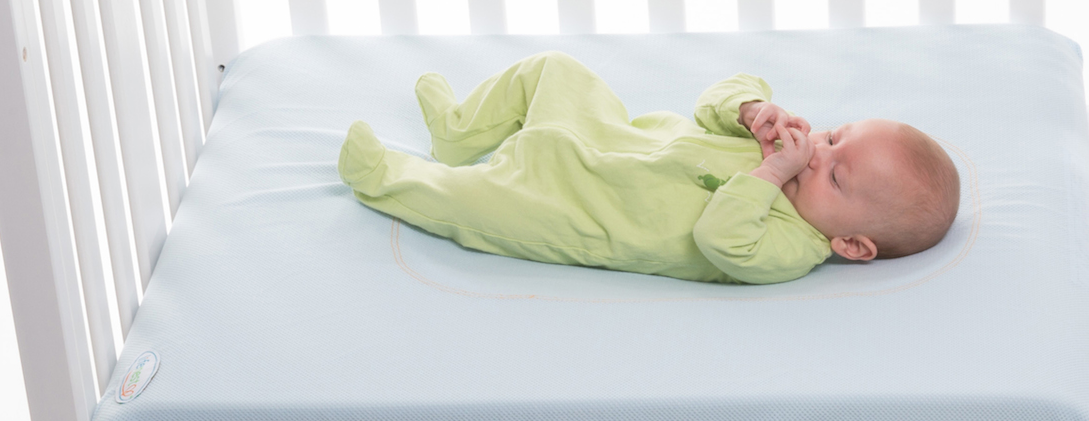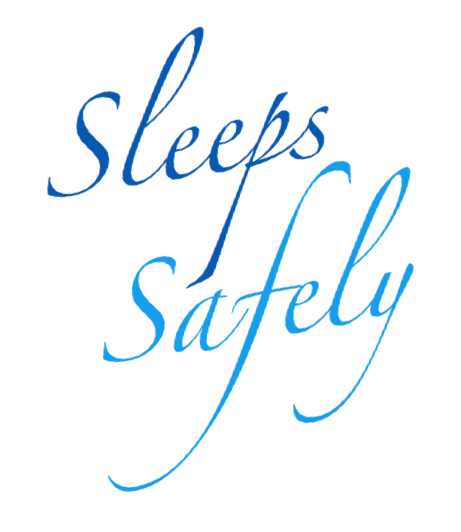
You'll sleep soundly when your baby

*Please note: Cot rail has only been removed to show how the Lifenest sits on top of the cot mattress
Frequently Asked Questions (FAQs)
About the First Sleep range including Lifenest, Lifenest Coversheets and Lifenest Breathable Bumpers
Yes, LifeNest is a mattress topper designed to sit on a regular cot mattress. There are two standard size cots sold in the UK – 60cm wide and 70cm wide. Please ensure you order the correct size LifeNest to suit your cot size.
Install the LifeNest™ Sleeping System at the foot of the cot, secured to the cot slats by the Lifenest sheet ribbons. Place your baby on the LifeNest™ with their feet to the foot of the cot. Please refer to the mattress Warning label and user manual supplied with your LifeNest™ and available for download from the bottom of the First Sleep Lifenest page.
Yes the LifeNest design is adapted to babies from birth to 5 month old (up to 20Lbs max).
As the LifeNest is a mattress topper it is important that there are not dangerous gaps (in excess of two fingers) left between the sides of the LifeNest and the sides of the cot. The LifeNest is sold in two sizes in the UK: One to suit 60 cm wide cots and one to suit 70cm wide cots. Please ensure you order the correct size LifeNest to suit your cot size.
No, the revolutionary LifeNest belongs to a new device category, the Sleeping System for babies. It is not a baby positioner as it doesn't includes bolsters.
Placing your baby to sleep on their stomach is NOT recommended. The American Academy of Paediatricians and the UK government driven “Back to Sleep” campaign recommend that your baby must sleep on their back. During the parent-supervised “tummy time” your baby will be able to breathe through the netting but should not be left unattended during this time or left to sleep on their stomach
The very High density LifeNest foam is very firm, complying with the American Academy of Paediatrician recommendation. This will help to prevent suffocation.
The mesh area creates a kind of hammock that cradles the baby, naturally maintaining them in a back sleeping position without restraining movement.
The 3D spacer strength has been tested by SGS Laboratories; the 3D spacer is sewed to the regular fabric with strong French stitch sewing. The sewing assembly strength has also been tested by SGS laboratories. For additional safety, the LifeNest Hammock reinforces the one part of the coversheet.
No, the LifeNest would not make any changes in spinal curvature. A better example/answer would be that the curve of the uterus does not make changes in spinal curvature nor does a flat bed flatten spinal curves. The same applies to baby bouncers, car seats and baby carriers.
Yes, the LifeNest has been designed to be used only in a regular cot. For safety reasons, this product should never be used outside the cot and the cot mattress must be placed in the lowest position.
The LifeNest is intended to be used only for babies from birth to 5 month old. Stop using the LifeNest when the baby is able to stand up. The cot mattress must be placed in the lowest position.
The two cover sheet ribbons at the foot of the LifeNest prevent the LifeNest from sliding in the cot avoiding a dangerous gap between the foot of the cot and the foot of the LifeNest. The 2 additional ribbons at the head of the LifeNest are intended to prevent the LifeNest from sliding in the cot.
No. The LifeNest cover sheets are the only ones recommended to be used with the LifeNest as they include a 3D spacer mesh fabric and they fit perfectly with the LifeNest mattress. They have been tested for your baby’s safety.
No, an additional sheet will obstruct the LifeNest mesh area. Also, an additional sheet may cause suffocation or strangulation. For further information on safe sleep, please review the Consumer Product Safety Commissions’ safe sleep guidelines
We do not recommend using a regular cot bumper with the LifeNest as it will obstruct the LifeNest lateral venting channels intended to allowing the exhaled C02 elimination. However the fully breathable LifeNest Breathable Cot Bumper is recommended if you would like to use a bumper.
No, the LifeNest polyurethane foam doesn't contain chemical fire retardant. The foam is enclosed in a mechanical fire retardant sheet in order to pass the open flame test 16CFR1633 and the 16CFR 1632.
Yes it has been tested by SGS laboratories agreed by the CPSCA.
BPA are used in the industry to soften the PVC. The LifeNest PVC bag is BPA free, Phthalates free, and lead free for your baby’s safety.
Yes, they can be machine-washed and tumble dried. We also recommend that you wash the coversheet before the first use.
The LifeNest mattress should not be washed. If anything is spilled onto the LifeNest mattress, we recommend removing the LifeNest cover sheet, then wiping the affected area with a damp cloth. This will avoid damaging the structure of the LifeNest mattress. DO NOT immerse the LifeNest mattress. Make sure the LifeNest mattress is thoroughly dry before re-use. Wash the cover sheet separately.
